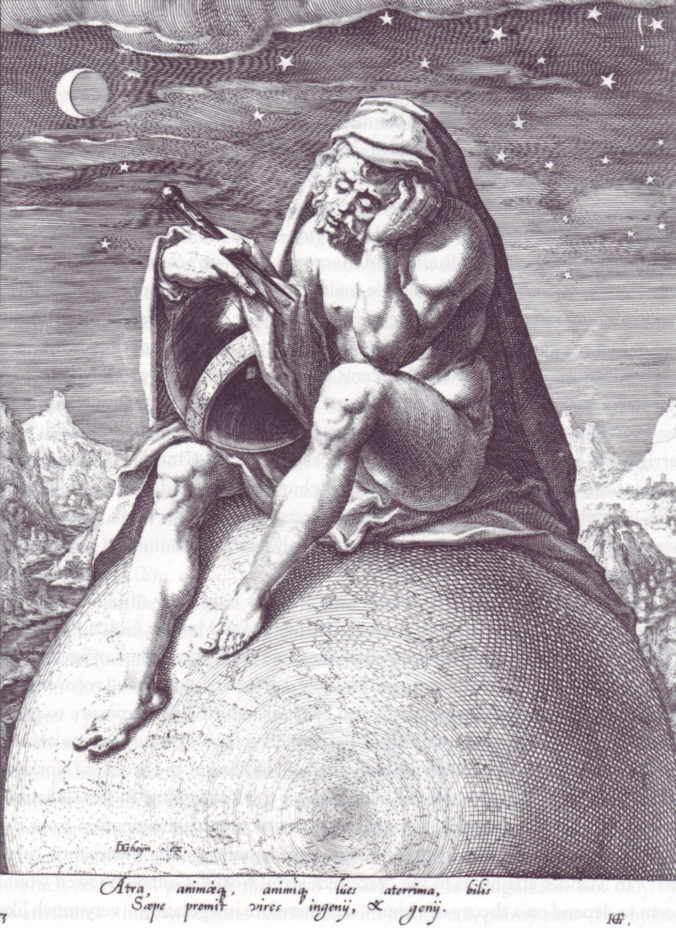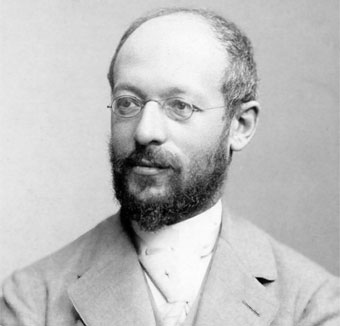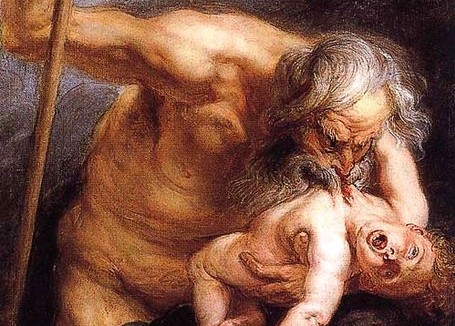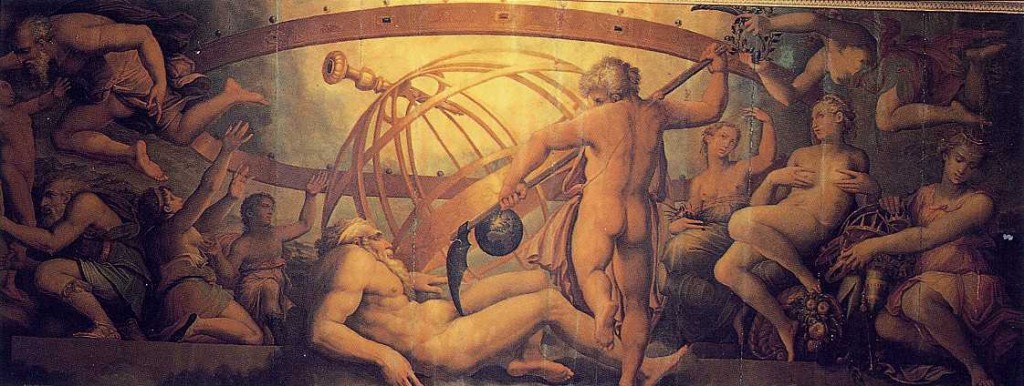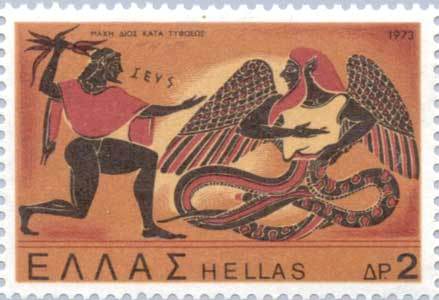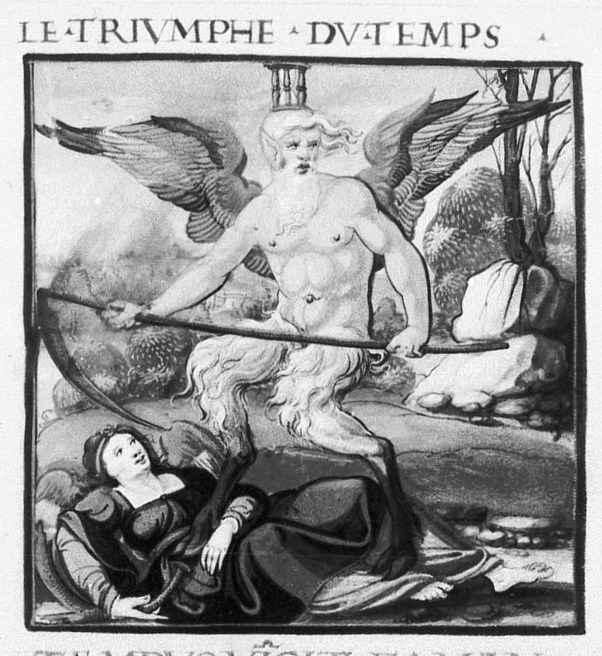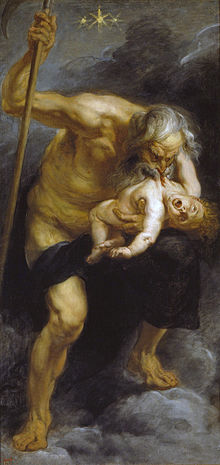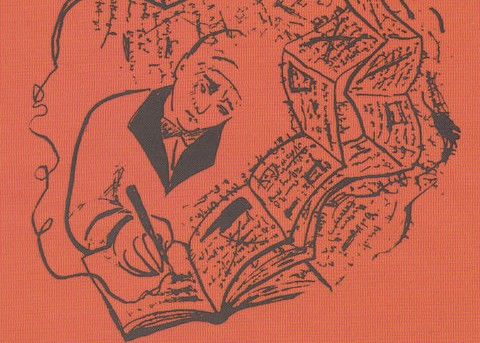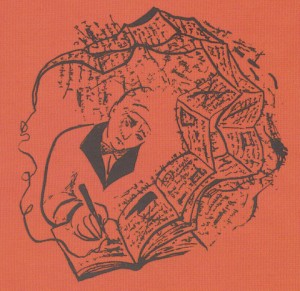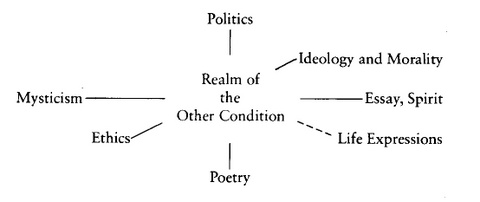In this chaotic, surreal, and trying year, books as always provided a source of steadiness and continuity, when there was enough time and space to give them full attention.
My two books of the year are both superior anthologies suffused with the editor/translators’ love and reverence for their authors–inspiring feats in themselves. The third volume of Musil translated by Genese Grill and published by Contra Mundum is a massive and masterful anthology of Musil’s plays and theater writings, the most substantial new Musil volume in years, expertly rendered and annotated. Hannes Bajohr, Florian Fuchs, and Joe Paul Kroll collectively perform an even greater feat in drawing together Blumenberg’s essays across the breadth of his career and finally producing an approachable entry point to his work in English. The introductions to both volumes are superb. The works are old, but Grill, Bajohr, Fuchs, and Kroll are their animating spirits today.
The same goes for Steve G. Lofts’s new translation of Ernst Cassirer’s Philosophy of Symbolic Forms, a massive undertaking of an underappreciated work by an underappreciated philosopher, the third Davos participant who saw more widely than Carnap and more humanely than Heidegger. A more affordable edition is warranted. And the long-awaited reissue of Klibansky, Panofsky, and Saxl’s Saturn and Melancholy, done with immense care and comprehensiveness, is a model example of cultural history at a level of depth and intimacy that has always been rare, and is perhaps becoming rarer.
Fantagraphics’s reissues of Alberto Breccia’s stunning work also deserve more attention. I read part of Perramus when Fantagraphics issued it 30 years ago and was blown away by Breccia’s singular style; its’ good to have the whole thing finally. His version of The Eternaut is also remarkable.
I hesitate to mention too many other books for fear of neglecting the others, but I will say that of the science and technology books, several deal with subjects that are currently inundated with popularizations. In my eye, those below are notably superior to the rest of their crowd, though the marketplace of ideas has apparently and frustratingly failed to raise these books above their brethren. To a lesser extent, the same applies to history and politics.
Jacob Burckhardt said that the 20th century would be the age of oversimplification. The 21st has so far been the age of increasingly desperate and defensive oversimplification, across all domains of knowledge. Here’s to the fight against it.
(Final note: for an anthology of short plague-related stories, please check out my little project The Enneadecameron, featuring worthy tales by John Crowley, Irina Dumitrescu, Genese Grill, Alta Ifland, and many more.)
BOOKS OF THE YEAR
Theater Symptoms: Plays and Writings on Drama
Musil, Robert (Author), Grill, Genese (Translator), Grill, Genese (Introduction)
Contra Mundum Press
History, Metaphors, Fables: A Hans Blumenberg Reader (signale|TRANSFER: German Thought in Translation)
Blumenberg, Hans (Author), Bajohr, Hannes (Translator), Fuchs, Florian (Translator), Kroll, Joe Paul (Translator)
Cornell University Press and Cornell University Library
LITERATURE
Eros, Unbroken
Kim, Annie (Author)
Word Works
The Long White Cloud of Unknowing
Samuels, Lisa (Author)
Chax Press
The Bern Book: A Record of a Voyage of the Mind (American Literature)
Carter, Vincent O. (Author), McCarthy, Jesse (Introduction)
Dalkey Archive Press
Peach Blossom Paradise (New York Review Books Classics)
Fei, Ge (Author), Morse, Canaan (Translator)
NYRB Classics
Lady Macbeth of Mtsensk: Selected Stories of Nikolai Leskov (New York Review Books Classics)
Leskov, Nikolai (Author), Chandler, Robert (Translator), Rayfield, Donald (Translator), Edgerton, William (Translator), Rayfield, Donald (Introduction)
NYRB Classics
Alexandria: A Novel
Kingsnorth, Paul (Author)
Graywolf Press
Impostures (Library of Arabic Literature, 65)
al-Ḥarīrī (Author), Cooperson, Michael (Translator), Kilito, Abdelfattah (Foreword)
NYU Press
Rogomelec (The Envelope-silence, 6)
Fini, Leonor (Author), Skwersky, Serena Shanken (Translator), Kulik, William T. (Translator), Eburne, Jonathan P. (Introduction)
Wakefield Press
Meaning a Life: an Autobiography
Oppen, Mary (Author), Yang, Jeffrey (Introduction)
New Directions
The Lost Writings
Kafka, Franz (Author), Stach, Reiner (Editor), Hofmann, Michael (Translator)
New Directions
Collected Stories
Hazzard, Shirley (Author), Olubas, Brigitta (Editor), Heller, Zoë (Foreword)
Farrar, Straus and Giroux
Surviving: Stories, Essays, Interviews (New York Review Books Classics)
Green, Henry (Author), Yorke, Matthew (Editor), Updike, John (Introduction), Yorke, Sebastian (Afterword)
NYRB Classics
The Homeric Hymn to Hermes (Cambridge Classical Texts and Commentaries, Series Number 62)
Thomas, Oliver (Editor)
Cambridge University Press
Lame Fate | Ugly Swans (36) (Rediscovered Classics)
Strugatsky, Arkady (Author), Strugatsky, Boris (Author), Strugatsky, Boris (Author), Vinokour, Maya (Author)
Chicago Review Press
The Third Walpurgis Night: The Complete Text (The Margellos World Republic of Letters)
Kraus, Karl (Author), Bridgham, Fred (Translator), Timms, Edward (Translator), Perloff, Marjorie (Foreword)
Yale University Press
Death in Her Hands: A Novel
Moshfegh, Ottessa (Author)
Penguin Press
I Live in the Slums: Stories (The Margellos World Republic of Letters)
Can Xue (Author), Gernant, Karen (Translator), Chen, Zeping (Translator)
Yale University Press
Other Moons: Vietnamese Short Stories of the American War and Its Aftermath
Ha, Quan Manh (Translator), Babcock, Joseph (Translator)
Columbia University Press
Journey from St. Petersburg to Moscow (Russian Library)
Radishchev, Alexander (Author), Reyfman, Irina (Translator), Kahn, Andrew (Translator)
Columbia University Press
A Lover's Discourse
Guo, Xiaolu (Author), Guo, Xiaolu (Author), Guo, Xiaolu (Author)
Grove Press
The Selected Poems of Tu Fu: Expanded and Newly Translated by David Hinton
Fu, Tu (Author), Hinton, David (Translator)
New Directions
Instantiation
Egan, Greg (Author)
Greg Egan
The Evidence
Priest, Christopher (Author)
Gollancz
Piranesi
Clarke, Susanna (Author)
Bloomsbury Publishing
Dispersion
Egan, Greg (Author)
Subterranean Pr
Posthumous Memoirs of Brás Cubas: A Novel
de Assis, Joaquim Maria Machado (Author), Costa, Margaret Jull (Translator), Patterson, Robin (Translator)
Liveright
HUMANITIES
Saturn and Melancholy: Studies in the History of Natural Philosophy, Religion, and Art
Klibansky, Raymond (Author), Panofsky, Erwin (Author), Saxl, Fritz (Author), Despoix, Philippe (Editor), Leroux, Georges (Editor)
McGill-Queen's University Press
Michelangelo’s Design Principles, Particularly in Relation to Those of Raphael
Panofsky, Erwin (Author), Panofsky-Soergel, Gerda (Editor), Spooner, Joseph (Translator), Panofsky-Soergel, Gerda (Introduction)
Princeton University Press
The Philosophy of Symbolic Forms, Volume 1: Language
Cassirer, Ernst (Author), Gordon, Peter E. (Foreword)
Routledge
The Philosophy of Symbolic Forms, Volume 2: Mythical Thinking
Cassirer, Ernst (Author), Gordon, Peter E. (Foreword)
Routledge
The Philosophy of Symbolic Forms, Volume 3: Phenomenology of Cognition
Cassirer, Ernst (Author), Gordon, Peter E. (Foreword), Lofts, Steve G. (Translator)
Routledge
Inky Fingers: The Making of Books in Early Modern Europe
Grafton, Anthony (Author)
Belknap Press: An Imprint of Harvard University Press
Hittite Texts and Greek Religion: Contact, Interaction, and Comparison
Rutherford, Ian (Author)
OUP Oxford
A Companion to Ancient Greek and Roman Music (Blackwell Companions to the Ancient World)
Lynch, Tosca A. C. (Editor), Rocconi, Eleonora (Editor)
Wiley-Blackwell
Wisdom as a Way of Life: Theravāda Buddhism Reimagined
Collins, Steven (Author), McDaniel, Justin (Editor), Hallisey, Charles (Introduction)
Columbia University Press
Time in Ancient Stories of Origin
Walter, Anke (Author)
OUP Oxford
Anger: The Conflicted History of an Emotion (Vices and Virtues)
Rosenwein, Barbara H. (Author)
Yale University Press
Who Needs a World View?
Geuss, Raymond (Author)
Harvard University Press
Civilization and the Culture of Science: Science and the Shaping of Modernity, 1795-1935
Gaukroger, Stephen (Author)
Oxford University Press
How to Think like Shakespeare: Lessons from a Renaissance Education (Skills for Scholars)
Newstok, Scott (Author)
Princeton University Press
Comparing the Literatures: Literary Studies in a Global Age
Damrosch, David (Author)
Princeton University Press
Classical Indian Philosophy: A history of philosophy without any gaps, Volume 5
Adamson, Peter (Author), Ganeri, Jonardon (Author)
Oxford University Press
The Emergence of Subjectivity in the Ancient and Medieval World: An Interpretation of Western Civilization
Stewart, Jon (Author)
Oxford University Press
Have A Bleedin Guess: The Story of Hex Enduction Hour
Hanley, Paul (Author)
Route
Frank Ramsey: A Sheer Excess of Powers
Misak, Cheryl (Author)
Oxford University Press
Early Modern German Philosophy (1690-1750)
Dyck, Corey W. (Author)
Oxford University Press
Alexander von Humboldt and the United States: Art, Nature, and Culture
Harvey, Eleanor Jones (Author), Sues, Hans-Dieter (Preface)
Princeton University Press
The Enlightenment that Failed: Ideas, Revolution, and Democratic Defeat, 1748-1830
Israel, Jonathan I. (Author)
Oxford University Press
Rediscovering the Islamic Classics: How Editors and Print Culture Transformed an Intellectual Tradition
El Shamsy, Ahmed (Author)
Princeton University Press
The Origins of Philosophy in Ancient Greece and Ancient India: A Historical Comparison
Seaford, Richard (Author)
Cambridge University Press
SCIENCE & TECH
The Light Ages: The Surprising Story of Medieval Science
Falk, Seb (Author)
W. W. Norton & Company
Predict and Surveil: Data, Discretion, and the Future of Policing
Brayne, Sarah (Author)
Oxford University Press
How the Brain Makes Decisions
Boraud, Thomas (Author)
Oxford University Press
Every Life Is on Fire: How Thermodynamics Explains the Origins of Living Things
England, Jeremy (Author)
Basic Books
The Phantom Pattern Problem: The Mirage of Big Data
Smith, Gary (Author), Cordes, Jay (Author)
Oxford University Press
Metazoa: Animal Life and the Birth of the Mind
Godfrey-Smith, Peter (Author)
Farrar, Straus and Giroux
A Dominant Character: How J. B. S. Haldane Transformed Genetics, Became a Communist, and Risked His Neck for Science: The Radical Science and Restless Politics of J. B. S. Haldane
Subramanian, Samanth (Author)
W. W. Norton & Company
Darwin's Psychology: The Theatre of Agency
Bradley, Ben (Author)
OUP Oxford
The Art of Doing Science and Engineering: Learning to Learn
Richard W. Hamming (Author), Bret Victor (Foreword)
Stripe Press
HISTORY
Rescue the Surviving Souls: The Great Jewish Refugee Crisis of the Seventeenth Century
Teller, Adam (Author)
Princeton University Press
Virtue Politics: Soulcraft and Statecraft in Renaissance Italy
Hankins, James (Author)
Belknap Press
The Invention of China
Hayton, Bill (Author)
Yale University Press
China’s Good War: How World War II Is Shaping a New Nationalism
Mitter, Rana (Author)
Belknap Press: An Imprint of Harvard University Press
Ravenna: Capital of Empire, Crucible of Europe
Herrin, Judith (Author)
Princeton University Press
Blood Royal: Dynastic Politics in Medieval Europe (The James Lydon Lectures in Medieval History and Culture)
Bartlett, Robert (Author)
Cambridge University Press
Legions of Pigs in the Early Medieval West (Yale Agrarian Studies Series)
Kreiner, Jamie (Author)
Yale University Press
Superpower Interrupted: The Chinese History of the World
Schuman, Michael (Author)
PublicAffairs
Away from Chaos: The Middle East and the Challenge to the West
Kepel, Gilles (Author), Randolph, Henry (Translator)
Columbia University Press
Active Measures: The Secret History of Disinformation and Political Warfare
Rid, Thomas (Author)
Farrar, Straus and Giroux
Illuminating History: A Retrospective of Seven Decades
Bailyn, Bernard (Author)
W. W. Norton & Company
The Human Factor: Gorbachev, Reagan, and Thatcher, and the End of the Cold War
Brown, Archie (Author)
Oxford University Press
Has China Won?: The Chinese Challenge to American Primacy
Mahbubani, Kishore (Author)
PublicAffairs
The Napoleonic Wars: A Global History
Mikaberidze, Alexander (Author)
Oxford University Press
SOCIAL SCIENCES
France before 1789: The Unraveling of an Absolutist Regime
Elster, Jon (Author)
Princeton University Press
The Blind Storyteller: How We Reason About Human Nature
Berent, Iris (Author)
Oxford University Press
What’s Wrong with Economics?: A Primer for the Perplexed
Skidelsky, Robert (Author)
Yale University Press
COMICS AND ART
The Eternaut 1969 (The Alberto Breccia Library)
German Oesterheld, Hector (Author), Breccia, Alberto (Artist)
Fantagraphics Books
Perramus: The City and Oblivion (The Alberto Breccia Library)
Breccia, Alberto (Author), Sasturain, Juan (Author), Mena, Erica (Translator)
Fantagraphics
The Sky is Blue with a Single Cloud
Tsurita, Kuniko (Author), Holmberg, Ryan (Translator)
Drawn and Quarterly
Nymph
Marzocchi, Leila (Author), Marzocchi, Leila (Artist)
Fantagraphics Books
Stay
Trondheim, Lewis (Author), Chevillard, Hubert (Artist)
Magnetic Press
Infinity 8 Vol.7: All for Nothing (INFINITY 8 HC)
Trondheim, Lewis (Author), Boulet (Author), Kennedy, Mike (Editor), Boulet (Artist)
Magnetic Press
Infinity 8 vol.8: Until the End (INFINITY 8 HC)
Trondheim, Lewis (Author), Killoffer (Artist)
Magnetic Press
Barnaby Volume Four (BARNABY HC)
Johnson, Crockett (Author), Nel, Philip (Series Editor), Robbins, Trina (Introduction), Clowes, Daniel (Cover Art)
Fantagraphics Books
Pogo: The Complete Syndicated Comic Strips Vols. 5 & 6 Boxed Set (POGO COMP SYNDICATED STRIPS HC BOX SET)
Kelly, Walt (Author), Kelly, Walt (Artist)
Fantagraphics Books
Winter Warrior: A Vietnam Vet's Anti-War Odyssey
Gilbert, Eve (Author), Camil, Scott (Author)
Fantagraphics
The George Herriman Library: Krazy & Ignatz 1919-1921 (GEORGE HERRIMAN LIBRARY HC)
Herriman, George (Author), Herriman, George (Artist)
Fantagraphics Books
The Dairy Restaurant (Jewish Encounters Series)
Katchor, Ben (Author)
Pantheon
The Daughters of Ys
Anderson, M. T. (Author), Rioux, Jo (Illustrator)
First Second
Philip Guston: A Life Spent Painting
Storr, Robert (Author)
Laurence King Publishing
Philip Guston Now
Guston, Philip (Artist), Cooper, Harry (Contributor), Godfrey, Mark (Contributor), Greene, Alison de Lima (Contributor), Nesin, Kate (Contributor), Fischli, Peter (Contributor), Hancock, Trenton Doyle (Contributor), Kentridge, William (Contributor), Dean, Tacita (Contributor), Ligon, Glenn (Contributor), Roberts, Jennifer (Contributor)
D.A.P./National Gallery of Art
Year of the Rabbit
Veasna, Tian (Author), Dascher, Helge (Translator)
Drawn and Quarterly
The Phantom Twin
Brown, Lisa (Author)
First Second
Solutions and Other Problems
Brosh, Allie (Author)
Gallery Books
Stuck Rubber Baby 25th Anniversary Edition
Cruse, Howard (Author), Bechdel, Alison (Introduction)
First Second
Paying the Land
Sacco, Joe (Author)
Metropolitan Books
Albrecht Dürer
Metzger, Christof (Editor)
Prestel
Glass Town: The Imaginary World of the Brontës
Greenberg, Isabel (Author)
Harry N. Abrams
Anselm Kiefer in Conversation with Klaus Dermutz (The German List)
Kiefer, Anselm (Author), Dermutz, Klaus (Author), Lewis, Tess (Translator)
Seagull Books
Exploring the Invisible: Art, Science, and the Spiritual – Revised and Expanded Edition
Gamwell, Lynn (Author), Tyson, Neil deGrasse (Foreword)
Princeton University Press
